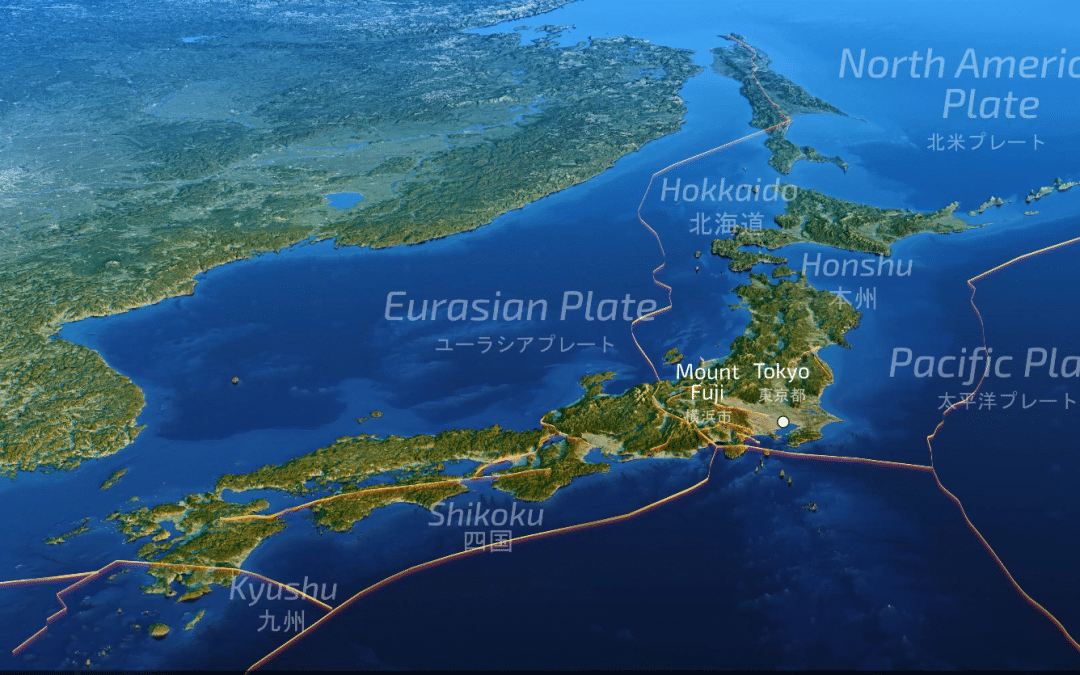Seismicity in Japan is defined by its position at the convergence of four major tectonic plates: the Pacific Plate, the Philippine Sea Plate, the Eurasian Plate, and the North American Plate. This unique and complex tectonic setting makes Japan one of the most seismically active regions in the world. Here are the key factors that define seismicity in Japan:
Subduction Zones: Japan sits atop several significant subduction zones where oceanic plates (Pacific and Philippine Sea Plates) subduct beneath continental plates (Eurasian and North American Plates). This process is responsible for frequent and powerful earthquakes and intense volcanic activity.
Megathrust Earthquakes: The subduction of the Pacific and Philippine Sea Plates under Japan can produce megathrust earthquakes, which are extremely powerful and can lead to devastating tsunamis. The 2011 Tohoku earthquake and tsunami are prime examples of such an event.
Complex Plate Interactions: The interaction between these plates is not uniform, resulting in various fault movements and seismic activities. This complexity leads to different earthquakes, including thrust, strike-slip, and normal faulting.
Volcanic Activity: The subduction process also fuels numerous active volcanoes across the Japanese archipelago, part of the Pacific “Ring of Fire.” Volcanic activity itself can generate earthquakes.
Crustal Earthquakes: Besides subduction-related seismic activity, Japan also experiences crustal earthquakes within the upper plates. These earthquakes can occur at shallow depths and can be highly destructive.
Historical Seismicity: Japan has a long history of earthquakes, providing a rich dataset for research and understanding seismic risks. This historical data helps develop effective earthquake-resistant construction techniques and disaster management strategies.
Tsunami Risk: Given Japan’s extensive coastline and the nature of seismic activity, the country is highly vulnerable to tsunamis, which have historically caused great destruction and loss of life.
Advanced Monitoring and Engineering: Japan has one of the world’s most advanced earthquake monitoring systems and stringent building codes designed to mitigate earthquake damage. Earthquake engineering and public safety education are also highly developed.
Induced Seismicity: Japan has experienced induced seismicity related to human activities, such as fluid injection or extraction, though it is much less significant than natural seismic activity.
These factors combine to create a highly active seismic environment in Japan, necessitating ongoing vigilance, research, and preparedness to mitigate the impacts of seismic events.

